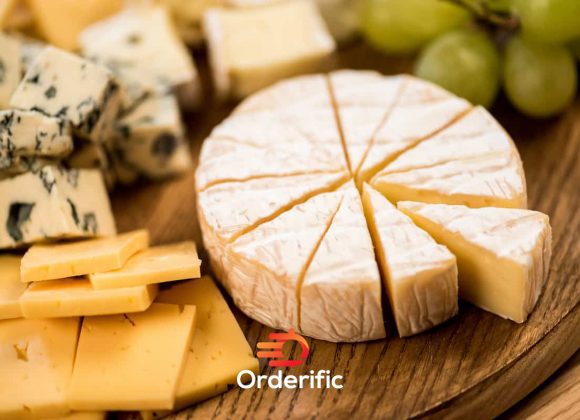Introduction
Welcome to this global culinary journey! As we explore the diverse types of cuisines, we’ll savor the rich, creamy curries of Indian cuisine, the delectable dumplings of Chinese cuisine, and the hearty casseroles of French cuisine. We’ll journey to North India, experiencing the robust flavors of their unique dishes, and then to South Africa, where the influences of African cuisine shine. From the lusciously spiced dishes of Turkish cuisine to the olive oil-rich, zesty delights of Greek and Italian cuisine, our taste adventure is bound to be fulfilling. Whether it’s sampling street food from food trucks, reveling in the spicy kick of Mexican food, or indulging in the delightful simplicity of Spanish cuisine, this exploration is about discovering the essence of ethnic cuisine and celebrating the rich food culture worldwide. So, let’s embark upon this tasty ride!
Diverse Palette: An Introduction To The Rich World Of Cuisines
The Melting Pot Of African Cuisine
African cuisine is as diverse as its continent, with an abundance of flavors and ingredients that mirror its rich cultural heritage. Rooted in centuries-old traditions, African cuisine, particularly South African, incorporates a mixture of locally available fruits, grains, vegetables, and an array of meat, including beef, chicken, fish, and sometimes exotic game. Woven into this gastronomic fabric are influences from Indian, Dutch, and British cuisines, resulting in a fusion of flavors that tantalize the taste buds in types of cuisines.
Indian Cuisine: A Symphony Of Spices
Indian cuisine, a gastronomic wonderland, is renowned for its bold flavors, rich curries, and aromatic spices. From the spicy biryanis of North India to the flavorful sambar and rice of the South, every dish is an expression of the region’s culture and geography. The cuisine’s signature use of a vast array of spices like turmeric, cardamom, and cumin gives it an unmistakable identity that stands out in the global culinary scene in types of cuisines.
Chinese Cuisine: A Gateway To The East
Chinese cuisine, a cornerstone of Asian food culture, boasts an astonishing variety of dishes and cooking techniques. The cuisine reflects the country’s vast geographic and cultural diversity, from the spicy, mouth-numbing flavors of Sichuan food to the subtle, fresh flavors of Cantonese dishes. The omnipresence of noodles, dumplings, and rice in Chinese cuisine speaks volumes about the role of staple food in shaping a nation’s culinary identity in the types of cuisines.
French Cuisine: The Art Of Fine Dining
French cuisine, the epitome of fine dining, is renowned for its culinary finesse, exquisite sauces, and premium ingredients. The rich, creamy casseroles and succulent duck confit, meticulously prepared under the watchful eyes of experienced chefs, are a testament to French culinary arts of the types of cuisines.
Revelling In Italian, Greek, And Turkish Delights
Italian cuisine, with its pasta, pizza, and risotto, is a testament to the Italians’ love for food, deeply rooted in their culture and tradition. Similarly, Greek cuisine, characterized by its generous use of olive oil, feta cheese, and fresh vegetables, paints a vivid picture of the Mediterranean’s bountiful produce. Turkish cuisine, defined by its lusciously spiced kebabs and sweet, flaky baklava, is a delightful blend of Middle Eastern and Mediterranean flavors, echoing the country’s rich culinary history in the types of cuisines.
The Bold Flavors Of Mexican Food
From tantalizing tacos to hearty enchiladas, Mexican food is all about vibrant flavors and comfort. The cuisine, heavily influenced by the Mayan and Aztec civilizations, is a fascinating mix of indigenous foods like beans and chili peppers intertwined with Spanish contributions like rice and meat.
The Culinary Tapestry Of Other Global Cuisines
From the sushi of Japan and the tapas of Spain to the bratwurst of Germany and the jerk chicken of the Caribbean, each cuisine presents a unique culinary narrative. Whether it’s the simplicity of Australian dishes or the complexity of Thai flavors, the variety of global cuisines reflects the diversity of cultures, traditions, and gastronomic preferences worldwide in types of cuisines.
While this overview offers a glimpse into the vast world of international cuisines, it’s just the tip of the iceberg. The true essence of each cuisine lies in savoring it, understanding its roots, and appreciating the love and culture that goes into preparing each dish. So whether you’re tasting these cuisines in a food truck or a fine dining restaurant, remember that each dish is a culinary journey, an exploration of flavors, and a celebration of global food culture in types of cuisines.
Traditional Delights: Exploring Classic And Time-Honored Cuisines
Italian Cuisine: A Feast Of Flavors
Italian cuisine, known worldwide for its pasta, pizza, and risotto, is a testament to the Italians’ deep love for food, which is deeply rooted in their culture and tradition. But there’s more to Italian cuisine than these internationally loved dishes. Furthermore, With a culinary tradition that changes from region to region, it offers an incredible variety of dishes and recipes. Antipasti (appetizers), Primi (first course, usually a pasta or rice dish), Secondi (main dish), and Dolci (dessert) are the typical structures of an Italian meal. So, From the olive oil-drenched dishes of the southern regions to the buttery and meaty cuisine of the north, the diversity of Italian cuisine is truly staggering, reflecting the country’s rich cultural heritage.
Turkish Cuisine: A Mosaic Of Tastes
Turkish cuisine is defined by its lusciously spiced kebabs, sweet, flaky baklava, and a delightful blend of Middle Eastern and Mediterranean flavors, echoing the country’s rich culinary history. This cuisine is an amalgamation of diverse culinary traditions, owing to Turkey’s location at the crossroads of Europe and Asia. Turkish cuisine is also celebrated for its wide variety of street food, with vendors serving everything from doner kebabs to simit, a sesame-encrusted bread ring. This food culture is diverse and it invites you to explore its variety, from the sizzling meat grills to the rich, aromatic Turkish coffee.
Greek Cuisine: The Mediterranean’s Bounty
Greek cuisine, characterized by its generous use of olive oil, feta cheese, and fresh vegetables, paints a vivid picture of the Mediterranean’s bountiful produce. So, This cuisine celebrates simplicity, with many dishes comprising just a handful of wholesome ingredients. Greek food is a perfect symphony of flavors and textures, with each dish showcasing a mix of fresh ingredients, hearty grains, flavorful meats, and succulent seafood. Hence, Greek cuisine is incredibly diverse, offering an array of dishes that cater to every palate, from the deliciously sweet baklava to the savory moussaka.
American Cuisine: A Melting Pot Of Flavors
American cuisine, like its people, is a melting pot of flavors and cultures brought to the country by immigrants from around the world. This cuisine is marked by its diverse range of dishes and cooking styles, reflecting the country’s multicultural heritage. From the famous hamburgers and hot dogs to the southern comfort foods like fried chicken and macaroni and cheese, American cuisine has something for everyone. The food truck culture is particularly prominent in American cuisine, offering a wide range of street eats from different ethnic backgrounds.
Thai Cuisine: The Harmony Of Tastes
Thai cuisine is a beautiful blend of sweet, sour, salty, and spicy flavors, with each dish striking a careful balance among these contrasting tastes. Hence, This cuisine is known for its aromatic dishes and is rich in herbs and spices, from the fiery heat of Thai chilies to the subtle tang of lemongrass and the sweet aroma of Thai basil. Thai food, with its emphasis on fresh, quality ingredients and flavorsome sauces, offers a culinary experience like no other. So, Be it a sizzling plate of Pad Thai or the rich, creamy Thai green curry, each dish is a gastronomic delight.
Chinese Cuisine: Diversity In Every Bite
Chinese cuisine is marked by an astonishing variety of dishes and cooking techniques, reflecting the country’s vast geographic and cultural diversity. Furthermore, From the spicy, mouth-numbing flavors of Sichuan food to the subtle, fresh flavors of Cantonese dishes, Chinese cuisine has a multitude of culinary narratives to share. The omnipresence of noodles, dumplings, and rice in this cuisine speaks volumes about the role of staple food in shaping a nation’s culinary identity. Hence, The vast repertoire of Chinese food, from the humble street food to the sophisticated dishes of fine-dining establishments, showcases the depth and breadth of this culinary tradition.
French Cuisine: Artistry On A Plate
French cuisine, the epitome of fine dining, is renowned for its culinary finesse, exquisite sauces, and premium ingredients. From the rich, creamy casseroles to the succulent duck confit, every dish is meticulously prepared under the watchful eyes of experienced chefs. French cuisine is as much about technique as it is about ingredients, with traditional cooking methods passed down through generations. This cuisine, with its strong regional identities and a rich culinary history, stands as a testament to the French’s love for quality food, making it one of the most revered cuisines in the world.
While this overview offers a glimpse into the vast world of international cuisines, it’s just the tip of the culinary iceberg. The true essence of each cuisine lies in savoring it, understanding its roots, and appreciating the love and culture that goes into preparing each dish. Whether you’re tasting these cuisines in a food truck
Fusion Fare: Where Culinary Traditions Blend And Create New Flavors
Fusion Cuisine: The Marriage Of Flavors
This type of cuisine is a culinary concept wherein ingredients, techniques, and flavors from different cultures are combined to create innovative and unique dishes. This innovative culinary trend often serves as a bridge, bringing together diverse food cultures and traditions while creating a palate of new flavors and experiences.
One of the most popular examples of fusion cuisine is Tex-Mex, which blends Mexican and American culinary traditions. It’s characterized by the liberal use of processed foods like cheese, meat, and beans.
Fusion Cuisine And Food Trucks
Food trucks have played a pivotal role in popularizing fusion cuisine. These mobile eateries offer a platform for chefs to experiment with varied culinary traditions, creating a blend of ethnic cuisine that is both exotic and familiar. You might find a food truck serving Korean BBQ tacos or a currywurst burrito, a delightful amalgamation of German and Mexican food.
African Influence On Fusion Cuisine
African cuisine, especially South African cuisine, is becoming increasingly influential in the realm of fusion food. The rich flavors and diverse ingredients of African cuisine blend well with other culinary traditions. Think of a North Indian curry made with African grains or a Chinese stir-fry featuring African vegetables and spices.
Indian And Chinese Culinary Fusion
Fusion cuisine also embraces the bold and aromatic flavors of Indian and Chinese cuisine. Indo-Chinese cuisine, for example, is a spicy and tangy blend of these two culinary traditions that has become popular worldwide. Fusion dishes like chili chicken or Manchurian, whether served in fine dining establishments or food trucks, are cherished by food lovers across the globe.
French And American Fusion
When it comes to fine dining, French and American cuisine have also found common ground. French-American fusion food is all about marrying the culinary finesse of French cuisine with the comfort and familiarity of American food. Imagine a hamburger topped with rich brie or a pizza laden with duck confit and caramelized onions.
The Mediterranean Blend
Mediterranean cuisine, particularly Italian, Turkish, and Greek cuisine, often intermingle, resulting in dishes that are a feast for the senses. Olive oil, a key ingredient in these cuisines, serves as a common link, enhancing flavors and adding a touch of Mediterranean goodness. A Greek salad with Italian pasta, or a Turkish kebab wrapped in an Italian flatbread, are just a few examples of this fusion.
Thai Fusion Food
Thai fusion food is gaining popularity due to its unique combination of sweet, sour, salty, and spicy flavors. This cuisine easily intertwines with other cuisines, resulting in dishes like Thai-inspired tacos or Thai-spiced pasta.
Culinary Fusion: The Road Ahead
As global food culture evolves, fusion cuisine continues to redefine our dining experiences. From the food trucks on our streets to the fine dining restaurants, fusion cuisine invites us to embark on a new culinary journey, breaking boundaries and blending traditions in the most delicious ways. Whether it’s the incorporation of Chinese techniques in French cuisine or the use of Mexican ingredients in Thai food, the possibilities are as diverse as our global food culture. Hence, As we continue to explore these exciting culinary frontiers, one thing is certain: our plates are becoming more diverse, and our palettes more global.
Exotic Offerings: Journeying Into The Unfamiliar Tastes Of Global Cuisines
Exploring The Unexplored: A Dive Into Lesser-Known Cuisines
While most of us are familiar with popular global cuisines like Italian, Chinese, or French, the world of gastronomy is much more vast and varied. There are numerous lesser-known cuisines, each carrying their unique flavor profiles, culinary techniques, and food philosophies, waiting to be discovered.
A Taste Of Peru: The Richness Of The Andes
Peruvian cuisine is a melting pot of influences from different parts of the world, including Europe, Asia, and West Africa, mixed with the traditional cooking styles of indigenous people. Furthermore, This gastronomy is powered by superfoods like quinoa, maca, and cacao, which are native to the region, and the use of unique ingredients like aji peppers and Amazonian fruits. Ceviche, a popular dish made with raw fish marinated in citrus juices, exemplifies the fresh, vibrant flavors of this cuisine. Peruvian food, with its diverse flavors and healthful ingredients, is gaining global recognition, and rightfully so.
Ethiopian Cuisine: Communal Dining Redefined
Ethiopian cuisine, characterized by its communal dining philosophy, is a feast for the senses. Meals are often served on a large sharing platter, covered with Injera, a sourdough flatbread that acts as both a dish and an eating utensil. Diners tear off pieces of Injera to scoop up various stews, known as Wats, made with lentils, meats, or vegetables. The cuisine is known for its liberal use of spices like berbere and mitmita, which lend a warm, hearty flavor to the dishes. This communal dining experience, coupled with the bold, vibrant flavors of the dishes, makes Ethiopian cuisine a culinary adventure worth embarking on.
Icelandic Cuisine: The Nordic Charm
Icelandic cuisine, much like its breathtaking landscapes, is a testament to the country’s resilience and resourcefulness. Despite the harsh climate and limited farming possibilities, Icelanders have created a unique cuisine centered around local ingredients like lamb, dairy, and seafood. Traditional dishes like Hangikjöt (smoked lamb) and Skyr (a dairy product similar to yogurt) reflect the country’s historical reliance on preservation techniques. Hence, In recent years, Icelandic cuisine has seen a revival, with chefs bringing a modern twist to traditional dishes, making it an exciting cuisine to explore.
Lebanese Cuisine: The Heart Of The Middle East
Lebanese cuisine, often considered the jewel of Middle Eastern gastronomy, offers a grand mix of textures and flavors. From succulent grilled meats (like Shawarma) to creamy dips (like Hummus and Baba Ghanoush), each dish is a culinary treat. The Mezze, a selection of small dishes served at the beginning of multi-course meals, encapsulates the spirit of Lebanese hospitality. This cuisine, with its emphasis on fresh ingredients and fragrant spices, offers a culinary journey that’s both healthful and delicious.
Vietnamese Cuisine: A Symphony Of Flavors
Vietnamese cuisine is characterized by its balance of flavors – sweet, sour, salty, and umami, often in a single dish. Pho, a noodle soup with meat and herbs, showcases this balance beautifully. Fresh herbs, rice noodles, and a variety of meats and seafood feature prominently in this cuisine, resulting in dishes that are light yet satisfying. So, Vietnamese food, with its focus on fresh produce and minimal use of oil, is considered one of the healthiest cuisines worldwide.
The Future Of Food Exploration
As we broaden our culinary horizons, these lesser-known cuisines offer fresh perspectives and enrich our gastronomic experiences. Whether it’s the communal dining of Ethiopia, the superfoods of Peru, or the balanced flavors of Vietnam, each cuisine has unique stories to tell and flavors to share. So, the next time you’re exploring the world of food, look beyond the familiar and dive into the lesser-known – you might find a new favorite!
Regional Varieties: Celebrating Culinary Diversity Within Countries

Exploring Greek Cuisine: From Sea To Table
Greek cuisine, deeply ingrained in the country’s history and culture, is a celebration of fresh, vibrant ingredients. The country’s diverse geography, from fertile plains to the Mediterranean coast, contributes to an abundance of produce that defines Greek gastronomy. Olives, grapes, wheat, and an array of herbs and vegetables are the staples, complemented by fresh seafood and dairy products. Tzatziki, Moussaka, and Souvlaki are just a few of the dishes that showcase the depth of Greek cuisine. This cuisine is not merely about the food, but also about the experience of sharing a meal, making every dining experience a feast for the senses.
Italian Cuisine: A Symphony Of Simplicity And Flavor
Italian cuisine, known worldwide for its simplicity and the quality of ingredients, embodies the concept of ‘less is more’. Despite its global popularity, Italian cuisine varies greatly from region to region, with each area boasting its unique dishes and culinary techniques. Whether it’s the richness of Parmigiano-Reggiano in Emilia-Romagna, the tangy delight of Buffalo Mozzarella from Campania, or the vibrant seafood of Sicilian cuisine, Italian gastronomy offers a culinary journey like no other. Pasta, pizza, and risotto, adored globally, are only the tip of the iceberg in the universe of Italian cuisine, which is a testament to the Italians’ love and respect for food.
Turkish Cuisine: A Crossroads Of Cultures
Turkish cuisine, one of the most diverse and flavorful cuisines in the world, has evolved over centuries, influenced by a variety of cultures and civilizations that have passed through or settled in Turkey. Furthermore, This diversity is evident in the vast array of dishes, from the rich, meaty stews and kebabs of the interior to the olive oil-drenched vegetables and fresh seafood of the Aegean and Mediterranean coasts. Baklava, Doner Kebab, and Turkish tea are some of the stars of Turkish cuisine, but the true strength of this gastronomy lies in its ability to turn simple ingredients into flavorful, satisfying meals.
These cuisines, each unique yet connected by common threads, are a testament to the rich tapestry of global gastronomy. Just like language, food speaks volumes about a country’s history, culture, and values. And in today’s globalized world, it’s easier than ever to embark on a culinary journey, discovering new cultures one dish at a time. So, whether you’re a seasoned food explorer or just starting your gastronomic journey, there’s never been a more exciting time to delve into the world of international cuisines in types of cuisines.
Seafood Sensations: Cuisines That Highlight The Bounty Of The Oceans
Japanese Cuisine: An Ode To The Ocean
In the realm of seafood-centric cuisines, Japanese cuisine shines brightly. As an island nation, Japan has a long history of seafood consumption, with its culinary tradition highlighting the freshness and innate flavors of the ocean’s bounty. Sushi, a globally recognized dish, encapsulates this approach, combining vinegared rice with a variety of seafood – from tuna and salmon to sea urchin and octopus. Sashimi, which is raw, thinly sliced seafood, is another delicacy that celebrates the purity of its ingredients. Beyond sushi and sashimi, Japanese cuisine offers a plethora of seafood dishes like tempura, grilled fish, and seafood hot pots. The key to these dishes lies in their preparation, which aims to enhance rather than mask the original flavor of the seafood. Thus, Japanese cuisine offers a masterclass in showcasing seafood, inviting us to savor the ocean’s bounty in its pure, unadulterated form in types of cuisines.
Plant-Based Paradises: Delving Into Vegetarian And Vegan Cuisines
Indian Cuisine: A Vegetarian’s Haven
Indian cuisine, with its rich tapestry of spices and flavors, is a paradise for vegetarians and vegans. Influenced by religious and cultural beliefs, a significant portion of the Indian population follows a vegetarian diet. Hence, This has led to a vast array of vegetarian dishes, featuring vegetables, lentils, grains, and dairy products. Dal (lentil soup), samosas (stuffed pastries), and paneer (cottage cheese) dishes are popular vegetarian offerings. For vegans, Indian cuisine offers delicious alternatives like chickpea curry and vegetable biryani. Indian breads like roti and naan, along with a variety of pickles and chutneys, complement these dishes. So, The culinary diversity within Indian vegetarian cuisine is immense, offering a delightful exploration of flavors in types of cuisines.
Mediterranean Cuisine: A Plant-Based Delight
Mediterranean cuisine, encompassing Greek, Turkish, and Italian culinary traditions, is another delightful option for vegetarian and vegan food lovers. Furthermore, This cuisine is known for its extensive use of fresh vegetables, fruits, legumes, nuts, and grains, with olive oil as a key ingredient. Greek salads, Italian pasta with tomato and basil, and Turkish vegetable stews are only a few examples of vegetarian offerings. For vegans, hummus, falafel, and stuffed vine leaves are popular dishes, providing a satisfying and flavorful dining experience. Hence, Mediterranean cuisine, with its emphasis on plant-based ingredients and heart-healthy fats, offers a delicious and healthful option for vegetarians and vegans alike.
Spice Adventures: Cuisines Known For Their Bold And Fiery Flavors
Mexican Cuisine: A Dance Of Heat And Flavor
Mexican cuisine, a UNESCO Intangible Cultural Heritage, is a vibrant fusion of indigenous Mesoamerican and Spanish influences, renowned for its love of chilies. From the smoky, raisiny depth of ancho chilies to the fiery heat of habaneros, each chili adds a unique flavor profile. Iconic dishes like Tacos al Pastor, Enchiladas, and the soul-warming Mole Poblano showcase the intricate balance of heat, sweetness, and acidity that is quintessential to Mexican cuisine. Equally intriguing are the street foods like Elote (grilled corn) and Tamales, often laced with chili-based sauces. Whether it’s a comforting bowl of Pozole, a spicy Salsa, or a decadent Chiles en Nogada, Mexican cuisine promises a flavorful spice adventure at every turn of types of cuisines.
Thai Cuisine: A Harmony Of Spicy, Sour, And Sweet
At the heart of Thai cuisine lies a symphony of flavors – spicy, sour, sweet, and salty, often experienced in a single bite. The fiery heat in Thai food primarily comes from Bird’s eye chili, used generously in dishes like Tom Yum Goong (spicy shrimp soup) and Som Tam (spicy green papaya salad). Thai curries, another staple, vary from the mild, creamy Massaman to the spicy, vibrant Green Curry. The use of herbs like lemongrass, galangal, and kaffir lime leaves lends aromatic undertones, creating a complex flavor profile. From street food stalls to high-end restaurants, Hence, Thai cuisine offers a thrilling journey for spice enthusiasts in types of cuisines.
Conclusion
In conclusion, the world of culinary delights is a vast and diverse one, offering an intriguing assortment of flavors, techniques, and traditions. From the vibrant spices of Mexican and Thai cuisines to the fresh, wholesome ingredients of Mediterranean and Japanese gastronomy, each cuisine tells a unique story. As we explore these culinary landscapes, we not only satisfy our palates but also gain insights into different cultures and their histories. Regardless of whether you’re a vegetarian, vegan, seafood lover, or a fan of fiery flavors, there’s a cuisine out there that will resonate with you. And in this culinary journey, there’s always something new to discover, a new dish to try, a new flavor to savor. So, keep exploring, keep tasting, and keep delighting in the diversity of global gastronomy.
Intrigued by the culinary world and eager to bring this diversity to your kitchen or restaurant? Embrace the world of food with Orderific. Schedule a demo with us and discover how we can enhance your gastronomic ventures. So, Let’s embark on a delicious journey together. Schedule a demo with Orderific.
FAQs
1. What are the different types of cuisines from around the world?
Cuisines from around the world include Italian, Mexican, Greek, Lebanese, Vietnamese, Japanese, Indian, and Thai, among others.
2. Can you provide examples of traditional cuisines from various countries?
Sure, examples include Italian Pasta, Greek Moussaka, Lebanese Shawarma, Vietnamese Pho, Japanese Sushi, Indian Biryani, and Thai Green Curry.
3. How does fusion cuisine combine elements from different culinary traditions?
Fusion cuisine merges different culinary elements like ingredients, cooking techniques, or dishes from two or more culinary traditions, creating innovative and unique flavors.
4. How do different regions within a country contribute to its unique cuisine?
Different regions contribute unique ingredients, cooking methods, and local traditions, resulting in a rich diversity within a country’s cuisine.













